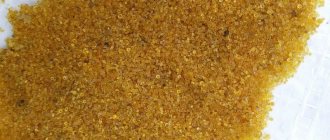GastrituNet.ru » Stomach diseases » Structure » Physiology
The digestion process is a rather complex mechanism that begins in the oral cavity and ends in the lumen of the colon. Enzymes of gastric juice contribute to the chemical processing of food, and regular relaxation and contraction of the muscle wall - mechanical. In addition to digesting and grinding food, the absorption of microelements and vitamins necessary for the body occurs in the lumen of the stomach.
- 1 Features of digestion in the stomach
- 2 Enzymatic processes in the stomach
- 3 Gastric enzymes
- 4 Main pepsins of gastric juice
- 5 Non-proteolytic enzymes of gastric juice
- 6 Useful video
- 7 Causes of enzyme deficiency
- 8 Pathologies due to lack of gastric enzymes
- 9 Symptoms of enzyme deficiency
- 10 How to compensate for enzyme deficiency
Features of digestion in the stomach
After passing through the oral cavity and esophagus, food enters the stomach, a muscular hollow organ whose wall is rich in glands. Its work is regulated by the neuroendocrine system, the vagus nerve, as well as the nature of nutrition. In addition, gastric juice is actively produced under the influence of gastrin, a special hormone synthesized in the G-cells of the pancreas and duodenum.
What is gastric juice
Digestive secretion is a clear, colorless liquid produced by the fundic glands of the inner lining of the stomach. It contains hydrochloric, or hydrochloric, acid, as well as mucus, salts and a significant amount of enzymes.
Hydrochloric acid ions are produced by the parietal cells of the mucous lining by active transport. A healthy stomach produces an average of 2-2.5 liters of acid per day. Its main role is to create an optimal acid-base balance for normal digestion and activate enzymes. In addition, hydrochloric acid performs the following functions:
- converts pepsinogen into active pepsin;
- helps enzymes break down proteins;
- has a bactericidal effect;
- triggers the transition of food from the stomach cavity to the lumen of the duodenum, activates the synthesis of gastrointestinal hormones such as gastrin and secretin;
- affects the motility of the gastrointestinal tract, in particular the stomach.
Mucus plays a protective role, enveloping the inner wall of the stomach, and also neutralizes hydrochloric acid at its high concentration.
What enzymes are in gastric juice?
Approximately 97-98% of digestive juice consists of water, the remaining 2-3% is acids, salts, trace elements and enzymes. The latter are divided into:
- proteolytic (they break down protein compounds);
- amylolytic (comes from the mouth with saliva and breaks down carbohydrate compounds);
- lipolytic (affect fats).
What role do enzymes play in the stomach?
The main enzymes of gastric juice promote the breakdown and absorption of proteins, essential amino acids, and neutral fats. In addition, these substances contribute to the transition of eaten food to a softer consistency and activate the Castle factor, which takes part in the absorption of vitamin B12.
Despite the abundance of enzymatic substances, collagen proteins, trans fats and quickly digestible carbohydrates are poorly digested in the lumen of the stomach.
Physicochemical properties of gastric juice
A few facts about gastric juice:
- Normally, there is a sour odor of gastric contents. It may vary depending on the amount of HCl. With a low level of hydrochloric acid and the presence of fermentation products, the smell resembles the evaporation of organic acids. For example, milk or vinegar. If the stomach contents smell rotten, it means the person is suffering from cancer.
- The digestive juice of the stomach is almost colorless. A yellowish tint appears in the presence of low acidity, achylia. Green color indicates a high level of hydrochloric acid and the presence of bile. Red and brown coloration indicates the presence of blood.
- A moderate amount of mucus is normal. Its volume changes with gastritis with low acidity (hypertrophic, atrophic).
- The volume of the stomach on an empty stomach ranges from 0 to 50 ml.
The listed characteristics play an important role in the diagnosis of pathology of the gastrointestinal tract. By changes in the physicochemical composition of gastric contents, one can judge the pathology of the digestive system.
Enzymatic processes in the stomach
Gastric juice is produced regularly, but its quantity and composition are not constant. This depends on the nature of the food eaten, the time of day and the background state of the gastrointestinal tract.
Its synthesis occurs in three main phases:
- Reflex . It begins with exposure to conditioned and unconditioned stimuli (the smell of food, the sound of dishes, the type of food, chewing, etc.). Its duration usually does not exceed 2 hours. The secretion produced during this phase is often called “appetizing” because it has a strong digestive ability and contains a large number of enzymes.
- Neurohumoral . It starts from the moment food enters the stomach cavity and is characterized by the formation of intermediate products. Subsequently, they are absorbed by the mucous lining of the stomach. The duration of the phase is about 10 hours.
- Tow truck . It is based on the movement of food masses into the duodenum.
Classification
Depending on the reactions that occur in the gastrointestinal tract, enzymes can be divided into 6 groups. This:
- oxidoreductase. Excites redox reactions;
- transferase. Responsible for the movement of some molecules to others;
- pepsin, trypsin, amylase and some others. Carry out hydrolysis of chemical structures;
- lyase, which accelerates the termination of chemical compounds;
- isomers. Change the established relative position in the formula;
- ligase Organizes the process of hydrolysis of adenosine triphosphoric acid.
Enzymes are highly selective. Because of this, some of them only break down proteins. This is about:
- protease;
- pepsin;
- chymotrypsin;
- trypsin.
With their help, the food bolus in the stomach is digested.
Another group in the form of bile acids and lipase is aimed at breaking down fats, while the following are intended to break down foods containing carbohydrates:
- amylase;
- sucrose;
- maltase;
- lactose.
The main enzyme in gastric juice is pepsin A. Its main purpose is to convert proteins into peptides. Pepsin works in the acidic environment characteristic of the fundus of the stomach.
Here the process of releasing hydrochloric acid takes place. Glands contained in the body and at the bottom of the stomach secrete pepsinogen. It is considered an inactive substitute for pepsin and functions exclusively in hydrochloric acid.
As a result of activation by hydrochloric acid, gastrixin (pepsin with the letter C) is formed from gastrixinogen. Gastric secretions also contain an analogue of hydrolase - gelatinose (letter B).
It is capable of dissolving collagen fibers found in meat products. Rennin (letter D, chymosin) forms paraxein and whey protein.
Interesting! Function, composition and properties of gastric juice - how it is formed
The digestive process, carried out using all of the listed substances, is designed to support the human body in assimilation of all useful elements coming from food.
Disturbances in the gastrointestinal tract lead to pathological disorders. To prevent them, they resort to the help of synthesized drugs.
Additional Information! The amount of elements produced by the stomach decreases sharply after a person has suffered fungal or infectious diseases, as well as as a result of long-term use of antibacterial drugs or alcohol abuse.
Main pepsins of gastric juice
Under the influence of pepsins, proteins are broken down into smaller molecules - peptones, dipeptides or amino acid residues. Their work is possible only at a certain temperature and acidic pH.
Pepsin fractions:
- pepsin A;
- pepsin C;
- pepsin D;
- pepsin B.
Pepsin A
It is considered the main proteolytic enzymatic substance that activates the earliest stage of protein hydrolysis. Active at sharply acidic pH (within 1.5-2).
Some of this pepsin is transported into the bloodstream, filtered by the renal system and excreted as uropepsin in the urine.
Pepsin C (gastric cathepsin, gastrixin)
Less active substance, especially in comparison with the previous enzyme. Breaks down protein compounds at pH 3-3.5. Normally, its concentration can be equal to that of pepsin A or exceed it by 3-5 times.
Pepsin B (gelatinase, parapepsin)
Participates in the breakdown of collagen group proteins (keratin, etc.), which connect muscle fibers. Activated when the acid-base balance is 5.5. If the environment becomes alkalized, it stops functioning.
Pepsin D (chymosin, renin)
Its main action is aimed at breaking down a special milk protein - casein. However, the process is possible only in the presence of calcium ions. Subsequently, the resulting casein contributes to the formation of flakes with a loose structure, which are easily fragmented.
Functions of gastric enzymes
The function of stomach enzymes is to break down food into simpler nutrients, which can then be absorbed or digested in the intestines.
Pepsin
Pepsin is the active form of pepsinogen, which is secreted by the chief cells of the stomach wall. Pepsinogen is converted to pepsin by stomach acid. Pepsin digests protein. It breaks down large protein chains (polypeptides) into smaller proteins (dipeptides and peptides).
Pepsin is most active in an acidic environment. Combined with the fact that it is secreted in an inactive form, this means that it does not damage or digest wall tissue. The mucous barrier that separates the stomach contents from the stomach wall also prevents self-digestion.
Although stomach acid is effective in killing bacteria that may be consumed in food or drinks, pepsin can also help in this regard to some extent.
Internal factor
Intrinsic factor is a glycoprotein that is secreted by the parietal cells of the stomach wall.
Intrinsic factor is a glycoprotein that is secreted by the parietal cells of the stomach wall. This is an enzyme-like substance that is responsible for the absorption of vitamin B12. However, intrinsic factor acts only in the small intestine, despite being secreted by the stomach wall.
Vitamin B12, which is released from food in the stomach, is bound by specific binding proteins and not by intrinsic factor. When this bound vitamin B12 enters the small intestine, pancreatic enzymes release vitamin B12 from the binding proteins.
Vitamin B12 then binds to intrinsic factor and is eventually released in the latter parts of the small intestine, where it is then absorbed into the bloodstream.
Non-proteolytic enzymes of gastric juice
This group of components of digestive secretions includes substances that break down fats, carbohydrates, and have a bactericidal effect.
These include:
- gastric lipase;
- lysozyme
Gastric lipase
Its function is to dissolve neutral fats to form fatty acids and glycerol. The action of the enzyme mainly extends to easily emulsifying (crushing) fats of milk and vegetable origin.
Lysozyme
Muromidase, or lysozyme, is produced by epithelial cells of the inner wall of the organ. The main effect of the substance is the fight against pathogenic microorganisms (viruses, fungi and bacteria).
Stomach enzymes
The mucous membrane of the stomach has a thickness of 1.5 to 2.5 mm; it is covered with a layer of special glandular cells that secrete a mucus-like secretion. In the deeper layers of the mucous membrane there are glands consisting of main and parietal cells. These glands produce gastric juice containing enzymes and hydrochloric acid.
Biologically active substances (the hormone gastrin, oligopeptides) are formed in the gastric mucosa, which stimulate the neurons of the medulla oblongata, which enhances the activity of the gastric glands.
Pepsin.
Pepsin (Greek pepsis - digestion) is a proteinase that is part of the gastric juice and is produced by the parietal cells of the gastric mucosa. The pepsin molecule represents one polypeptide chain containing 327 amino acid residues. Pepsin is obtained in the form of protein crystals. The molecular weight of pepsin is 34644. Crystalline pepsin has high catalytic activity; 1 g of pepsin curdles 100,000 liters of milk in 2 hours, or dissolves 50,000 g of boiled egg white. The activator of pepsin is hydrogen ions (HCl) and pepsin. Pepsin proenzyme – pepsinogen
Pepsinogen H+, pepsin Pepsin
Pepsin hydrolyzes not only proteins, but also polypeptidases, oligopeptidases, dipeptidases (mainly the substrate is protein). Pepsin hydrolyzes peptide bonds formed by the amine groups of aromatic amino acids. The optimum pH for pepsin is 1.5-2.5.
To determine the activity of pepsin, the Pyatnitsky method is used - the express method. The method is based on the ability of pepsin to curdle milk protein – caseinogen. Curdling of the milk-acetate mixture with pepsin at pH = 4.9 and a temperature of 250C occurs in proportion to its ability to digest protein. A unit of pepsin activity is taken to be the amount of pepsin (mg) that, at pH = 4.9-5 and a temperature of 250C, curdles 5 cm3 of a milk-acetate mixture (this unit corresponds to 0.010 mg of crystalline pepsin. Gastric juice normally contains 40-60 in 1 cm3 units of pepsin, that is, 1 cm3 of gastric juice should contain 0.4-0.6 mg of pepsin.
Gastricin.
Gastricsin is a hydrolase, a proteinase. Gastricsin (Greek gastros - stomach) is an enzyme that is part of gastric juice. Produced by the gastric mucosa. Optimum pH = 3.5-4. The proenzyme is gasrixinogen. The activator of gastrixin is H+ ions (HCl). The substrate is proteins, the products of hydrolysis are polypeptides.
Parapepsin.
Parapepsin is an enzyme found in gastric juice. Produced by parietal cells of the gastric mucosa. Activated by H+ ions (HCl). The substrate for parapepsin is the protein hemoglobin, the products of hydrolysis are polypeptides. Parapepsin is a hydrolase.
Gelatinase
. Gelatinase is a hydrolase present in gastric juice. Hydrolyzes gelatin polypeptide.
Chymosin.
Chymosin (Greek chymos - juice) is a proteinase produced by the gastric mucosa. Other names for the enzyme are rennin, rennet, labenzyme. Characteristic for a child's body. The activator is H+ ions, the zymogen is chymosinogen, the substrate is milk proteins. Obtained from rennet. The abomasum (fourth section of the stomach) of a calf contains rennet, which curdles milk. Rennet is used as a curdling agent in cheese making. Rennet converts the milk protein caseinogen into a calcium caseinate curd. Purified rennet is obtained in the form of crystals; it has high catalytic activity: one part of the enzyme at pH = 6.2 and a temperature of 370 C coagulates 4,550,000 parts of milk.
Gut enzymes
Intestinal juice is a digestive juice secreted by the liberkühn glands of the intestinal mucosa. 2 liters of intestinal juice are secreted per day.
Intestinal juice is a colorless, turbid liquid with a pH > 7. The juice contains the following proteolytic enzymes: carboxypeptidase, aminopeptidase, dipeptidase.
Intestinal juice contains enteroxidase, which is an activator of all proteolytic enzymes of pancreatic juice. Trypsin activation occurs in the duodenum. Activated trypsin, in turn, is an activator of all proteolytic enzymes in the cavity of the duodenum.
Pancreatic (pancreatic) juice
- digestive juice of the pancreas, flowing through the ducts into the intestines. During the day, 0.8 liters of pancreatic juice is produced, which enters the duodenum.
The secretion of pancreatic juice begins 2-3 minutes after eating and lasts 6-14 hours. Prolonged secretion of pancreatic juice occurs when eating fatty foods. Pancreatic juice is a colorless transparent liquid with a pH of 7.8-8.7. The proteolytic enzymes of pancreatic juice are trypsin and chymotrypsin.
Trypsin. Trypsin (Greek thrypsis - liquefaction) is a proteinase that is part of the pancreatic juice secreted by the pancreas. Pancreatic juice flows through ducts into the small intestine. The molecular weight of trypsin is 24000. The isoelectric point corresponds to pH = 10, the optimum pH = 8-9 (the physiological pH range of the small intestine is 7.8-8.2).
Trypsin hydrolyzes predominantly peptide bonds that involve the carboxyl group of lysine or arginine. The zymogen of trypsin is trypsinogen. In 1899, Shepovalnikov, a member of the laboratory of Academician I.P. Pavlov, established that trypsin is present in digestive juice in the form of the proenzyme trypsinogen. The activators are trypsin and enterokinase. During the activation process, one hexapeptide molecule is cleaved from one trypsin molecule.
Chymotrypsin. Chymotrypsin (Greek chymos - thrypsis juice - liquefaction) is a digestive proteolytic enzyme. Chymotrypsin is part of pancreatic juice, which is produced by the pancreas and enters the small intestine through the ducts. The proenzyme of chymotrypsin is chymotrypsinogen, the activator is enterokinase and trypsin. Chymotrypsin belongs to the class of hydrolases and is a proteinase. Optimum pH = 7.8-8.2. Substrate - polypeptides, hydrolysis products - oligopeptides. Chymotrypsin cleaves peptide bonds between aromatic amino acids, as well as those bonds that were not hydrolyzed by trypsin. The active center of chymotrypsin is characterized by the presence of amino acid residues such as serine, histidine, and aspartic acid.
Carboxypeptidase. Carboxypeptidase (carboxypolypeptidase) is a digestive hydrolase produced by the pancreas and is part of pancreatic juice. The substrate for carboxidase is oligopeptides containing C-terminal amino acids. C-terminal amino acids are those terminal amino acids containing a free –COOH group. Carboxypeptidases cleave off C-terminal amino acids.
Action diagram:
COOH
|
X – CO – NH – C – H
|
R
Carboxypeptidases have code 3.4.12. Carbopeptidase A (3.4.12.2) is a metalloenzyme. Its molecular weight is 35,000, found in the intestines, obtained in the form of crystals, contains 1 mole of Zn2+ per 1 mole of protein, and is used for protein determination.
Aminopeptidase. Aminopeptidase is a digestive hydrolytic enzyme produced by the intestinal mucosa and is part of the intestinal juice. Catalyzes the removal of N-terminal amino acids. N-terminal amino acids are amino acids located at the end of the polypeptide chain and containing a free amino group.
Aminopeptidases have code 3.4.11. The first digit of the code denotes the class of hydrolases, the second – the subclass of peptide hydrolases, the third – the group of aminopeptidases.
Action diagram:
RR¢
| |
H2N – CH – C NH – CH – C…
||
O
Leucine aminopeptidase (3.4.11.1) is widespread in nature. This enzyme contains Zn and hydrolyzes leucine compounds, peptides, amides containing N-terminal amino acids.
Hydrochloric acid in the stomach
In the parietal cell elements of the fundic glands, gastric acid is produced - hydrochloric acid (HCl). The concentration of this substance is 160 millimoles per liter.
The role of HCl in digestion:
- It liquefies the substances that form the food bolus and prepares it for hydrolysis.
- Creates an acidic environment in which gastric juice enzymes are more active.
- Acts as an antiseptic and disinfects gastric juice.
- Activates hormones and pancreatic enzymes.
- Maintains the required pH value.
What enzymes are included in gastric juice?
The composition of gastric juice includes enzymes of proteolytic and non-proteolytic nature. The first group of substances specializes in protein hydrolysis. They break the bonds between protein structures to form simple peptides. Under the influence of non-proteolytic enzymes, fats are broken down.
A number of substances have proteolytic properties: rennin, pepsin, gastrixin, ATP, lactic acid, mucus, gastromucoprotein. The first three enzymes are characterized by a similar primary structure. They come from pepsinogen.
Non-proteolytic components include lipase. Necessary for the breakdown of emulsified milk fats. It is of particular importance for infants.
Table 3. Enzymes included in gastric juice
| Enzyme | What cells produce | Role |
| Pepsinogen | The enzyme is synthesized by fundic cells of the stomach | It is a precursor to pepsin. Pepsin is formed from pepsinogen with the help of HCl |
| Pepsin | Formed from pepsinogen | Breaks protein peptide bonds. Promote the formation of simple peptides |
| Gastricin | ||
| Chymosin | The main function is to curdle milk. Present in children in infancy. Interacts with an important component of milk called casein. During the reaction, an insoluble clot is formed, which is quickly removed from the stomach. In an adult, milk is curdled with the help of pepsin. | |
Castle Factor | Source: parietal cells | Transforms vitamin B₁₂ into an active form that can be absorbed into the gastrointestinal tract |
| Lipase | Substance secreted by chief cells | Necessary for the breakdown of emulsified fats |
| Lysozyme | The protein is formed as a result of the active activity of fundal cells | Has an antimicrobial effect |
What is gastric juice?
The secretion of the glands located in the gastric mucosa is a clear, colorless, odorless liquid with flakes of mucus. The value of its acidity is characterized by its hydrogen index (pH). Measurements show that the pH in the presence of food is 1.6–2, that is, the liquid in the stomach is highly acidic. The lack of nutrients leads to alkalization of the contents due to bicarbonates to pH = 8 (the maximum possible value). A number of stomach diseases are accompanied by an increase in acidity to values of 1–0.9.
The digestive juice secreted by the glands is complex in composition. The most important components - hydrochloric acid, gastric juice enzymes and mucus - are produced by different cells of the inner lining of the organ. In addition to the compounds listed above, the liquid contains the hormone gastrin, other molecules of organic compounds, as well as minerals. The stomach of an adult produces an average of 2 liters of digestive juice.











